#Anna Sigalevitch
Photo
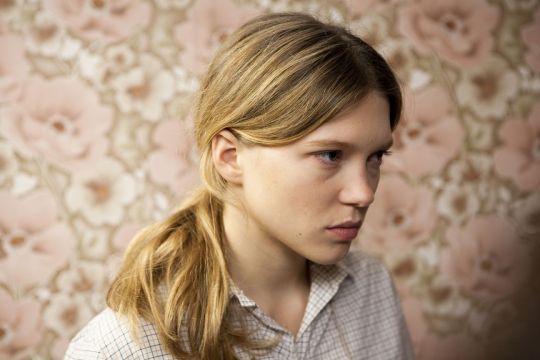
Dear Prudence (Belle Épine), Rebecca Zlotowski (2010)
#Rebecca Zlotowski#Gaëlle Macé#Christophe Mura#Marcia Romano#Léa Seydoux#Anaïs Demoustier#Agathe Schlenker#Johan Libéreau#Guillaume Gouix#Anna Sigalevitch#Marie Matheron#Nicolas Maury#Michaël Abiteboul#Swann Arlaud#George Lechaptois#Robin Coudert#Julien Lacheray#2010#woman director
63 notes
·
View notes
Photo
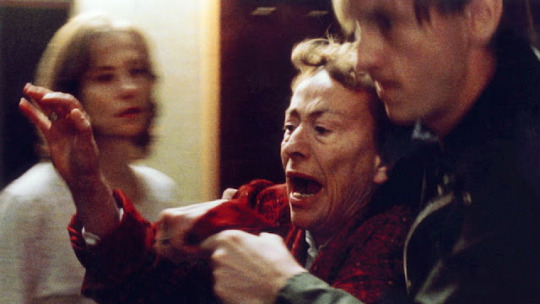
Isabelle Huppert, Annie Girardot, and Benoît Magimel in The Piano Teacher (Michael Haneke, 2001)
Cast: Isabelle Huppert, Annie Girardot, Benoît Magimel, Anna Sigalevitch, Susanne Lothar, Udo Samel, Cornelia Köndgen. Screenplay: Michael Haneke, based on a novel by Elfriede Jelinek. Cinematography: Christian Berger.
Michael Haneke's cinema of cruelty reaches its apex (some would say nadir) in The Piano Teacher, which becomes an almost definitive vehicle for Isabelle Huppert's ability to create terrifying women. In that regard her performance surpasses even the murderously manipulative Jeanne in Claude Chabrol's La Cérémonie (1995). The Piano Teacher's Erika Kohut calls to mind the masochistic Michèle Leblanc in Paul Verhoeven's Elle (2016), which earned Huppert the Oscar nomination that should have gone to her for those earlier films. The Piano Teacher resembles Elle in that both Erika and Michèle are masochists, the product of horribly dysfunctional families: Michèle's father was a mass murderer, Erika's died in a mental institution. But Erika is the more intricately fascinating character because she is devoted to the beauty of her art, releasing her pent-up sexuality in private acts of self-mutilation, watching pornography, and voyeurism -- there are drive-in movie theaters in Vienna? who knew? -- whereas Michèle has channeled hers into creating video games full of violent images. It's the disconnect between the beauty of Schubert and Schumann and Bach that fills the film's soundtrack and the ugliness of Erika's desire for self-degradation that gives Haneke's film its essential tension. To be sure, she takes out her frustrations on her students, cruelly mocking them in her attempts to make them live up to her musical ideals, but it's only when she finds a man who can challenge her own desire to dominate that she approaches fulfillment. Walter Klemmer (Benoît Magimel) is younger than she; he's handsome and athletic and smart, and he has the kind of musical talent that potentially matches her own. The masochist thinks she has met her potentially equal sadist. It's in her attempts to convert Walter's otherwise conventional sexuality into something as dark and damaged as her own that she encounters her limits, becoming the failure that her horrendous harpy of a mother (Annie Girardot) has continually called her. None of this is a lot of fun: The Piano Teacher is one of the least erotic films about sex ever made. Haneke has jettisoned the backstories of Erika and her mother that were apparently supplied in Elfriede Jelinek's novel (which I haven't read), leaving us to speculate on how mother and daughter wound up in a relationship in which they are slapping and yelling at each other one moment, then cuddling in a shared bed the next. But Haneke is not an explainer; he's content to show, not tell. And that often gives his films a visceral quality that makes them as fascinating and provocative of thought as they are unpleasant.
10 notes
·
View notes
Photo
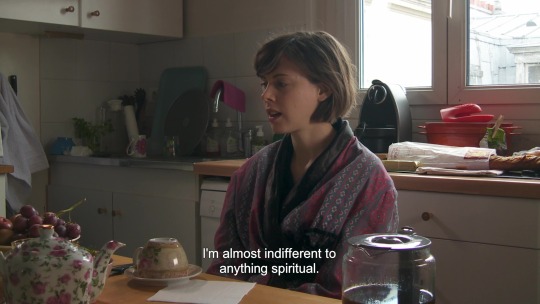

Que le diable nous emporte [Tempting Devils] (Jean-Claude Brisseau - 2018)
#Que le diable nous emporte#Tempting Devils#French cinema#Jean-Claude Brisseau#Fabienne Babe#Anna Sigalevitch#Jean-Christophe Bouvet#Isabelle Prim#Fabrice Deville#life#European cinema#French movies#Teuflische Versuchung#Baştan ��ıkaran Şeytanlar#Que o Diabo Nos Carregue#girls#愉楽への手ほどき#vice#vicious
18 notes
·
View notes
Photo


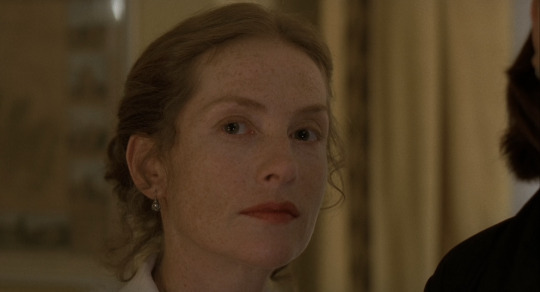






The Piano Teacher. 2001. Michael Haneke. Austria/France.
#Michael Haneke#haneke#the piano teacher#isabelle huppert#annie girardot#benoit magimel#anna sigalevitch#alfriede jelinek#austria#france#cinema#film#framingtheframe#mubi
60 notes
·
View notes
Photo

Belle épine (2010) Rebecca Zlotowski
November 17th 2019
#belle epine#dear prudence#2010#rebecca zlotowski#lea seydoux#anna sigalevitch#agathe schlencker#anais demoustier#johan libereau
3 notes
·
View notes
Link
En raison de ses démons, la construction du conte moral proposé par « Que le diable nous emporte », aussi savante soit-elle dans une stratégie des apparences théorématiques voilant cependant un credo axiomatique, ne sort résolument pas de la « pensée straight ».
#que le diable nous emporte#jean-claude brisseau#film#movie#director#art film#cinephile#french cinema#brisseau#isabelle prim#fabienne babe#anna sigalevitch
0 notes
Photo
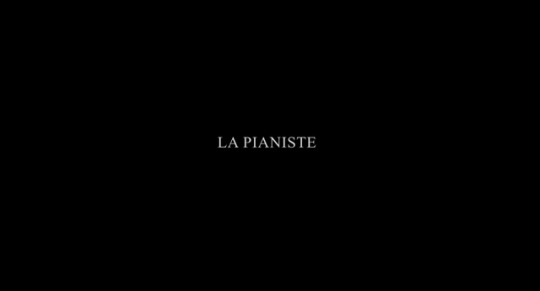



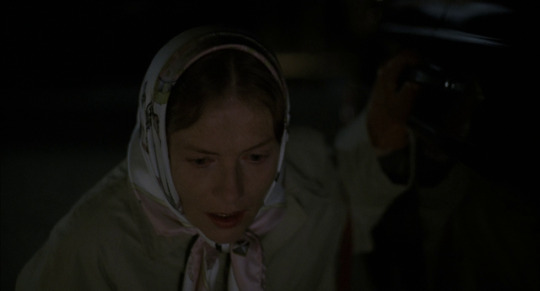
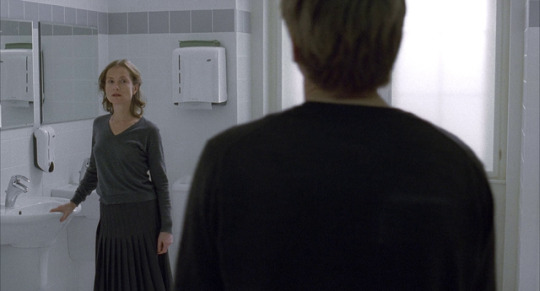




La Pianiste (Michael Haneke, 2001)
237 notes
·
View notes
Photo

Adventures in
#Francois margolin#Anna#Anna sigalevitch#fancois bereland#michel bouquet#Robert Herschel#Robert hirsch#lui#athboy
1 note
·
View note
Text
Lara Croft Voice Talents in Shadow of the Tomb Raider
The voice actors lending Lara Croft their voices in all available audio languages have been announced. Gamers playing the game in English will once again have Camilla Luddington as Lara Croft, likewise Maria Koschny (who is usually the voice actress dubbing Jennifer Lawrence and has lent Lara her voice in Rise) will return for the German audience.
Full list of voice actresses
English: Camilla Luddington ·
French: Anna Sigalevitch
Italian: Benedetta Ponticelli
German: Maria Koschny
Castilian Spanish: Danai Querol
Latin American Spanish: Marisol Romero
Polish: Karolina Gorczyca
Brazilian Portugese: Fernanda Bullara
Russian: Polina Scherbakova (Полина Щербакова)
Chinese: Yang Meng Lu
Arabic: Nadine Njem

15 notes
·
View notes
Text
Maria Koschny synchronisiert Lara Croft in Shadow of the Tomb Raider
Spieler die die Tomb Raider Spiele in deutscher Synchronisation spielen, dürfte es interessieren, dass Maria Koschny, die auch Jennifer Lawrence ihre Stimme leiht, nach Rise of the Tomb Raider erneut die Stimme von Lara in “Shadow of the Tomb Raider” sein wird. Damit wird uns zum Glück erspart, dass es nach Nora Tschirner in Tomb Raider (2013), eine dritte Stimme innerhalb der Reboot-Trilogie geben könnte.
Spieler, die die englische Synchronisation wählen, werden wie gewohnt Camilla Luddington als Lara geboten bekommen, und können dies auch zum leichteren Verständnis für nicht so geübte Linguisten mit deutschen Untertiteln tun.
Die Synchronsprecherin Maria Koschny, bekannt als deutsche Stimme von Hollywood Schauspielerin Jennifer Lawrence, spricht Actionheldin Lara Croft im neuen Videospiel SHADOW OF THE TOMB RAIDER. Nicht nur Maria Koschny hat ein gutes Gespür für Sprache, auch Archäologin Lara Croft besitzt ein außergewöhnliches Talent dafür – im Spiel lernt sie „die Sprache der Menschen“ Quechua.
Auf ihrer chakuy nach der Geheimorganisation Trinity verschlägt es Lara nach Süd- und Mittelamerika. So verfolgt die Archäologin nicht nur einen Verdächtigen während der Feierlichkeiten zum Tag der Toten in Mïshiku, sondern begibt sich auch auf sasa Expedition in den südamerikanischen yunka und besucht die llaqta paititi – die „Verlorene Stadt der Inka“. Um sich dort zu verständigen, erwirbt sie unter anderem Sprachkenntnisse in Quechua.
Quechua ist eine Gruppe von eng miteinander verwandten Dialekten und lässt sich auf die Ureinwohner der Zentralanden in Peru zurückführen. Die Inka haben sie benutzt und verbreitet. Durch ihre neuerworbenen Kenntnisse in der alten Sprache kann Lara in Paititi mit dem runa llaqta sprechen und uralte Inschriften lesen, um Rätsel zu lösen. Ihr Ziel dabei: Die awqa, besiegen und die pacha vor einer bevorstehenden Apokalypse retten. Dabei stellt die Archäologin viele ihrer Fähigkeiten unter Beweis: qaqa lluq’ay, sie schwingt an waska yura, sie schwimmt in Wasserhöhlen und kämpft sich durch den yunka. Lara durchlebt schwere Zeiten, um schließlich ihrer Bestimmung als „Tomb Raider“ zu folgen.
Hablas Quechua? No? Dann knacke das Rätsel wie Lara Croft!
Um die vollständige Pressemitteilungen zu lesen, findest du weiter unten eine Entschlüsselungshilfe.
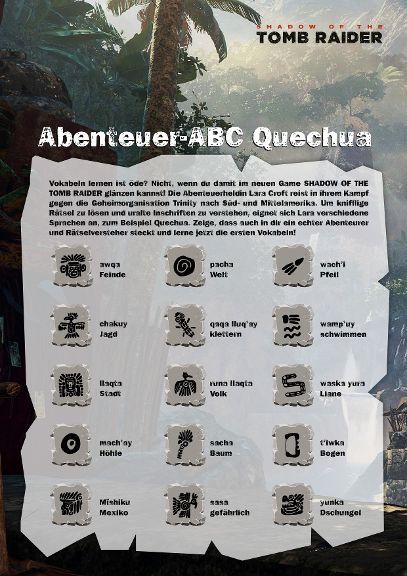
Die anderen Sprachen übernehmen folgende Synchron-Talente:
French: Anna Sigalevitch
Italian: Benedetta Ponticelli
Castilian Spanish: Danai Querol
Latin American Spanish: Marisol Romero
Polish: Karolina Gorczyca
Brazilian Portugese: Fernanda Bullara
Russian: Polina Scherbakova (Полина Щербакова)
Chinese: Yang Meng Lu
Arabic: Nadine Njem
Zur Erinnerung: Shadow of the Tomb Raider kommt am 14. September 2018 für PC, PlayStation 4 und Xbox One auf den Markt.
1 note
·
View note
Text
Une création becketienne

En 1981 Maguy Marin s’inspire de Beckett qu’elle lit depuis les années quatre-vingt, pour créer sa pièce May B. Elle reconnaît dans ses œuvres l’exploration des mouvements impossibles mais nécessaires à la vie. La pièce convoque cinq hommes et cinq femmes, sans âge, dont les corps plâtreux et difformes racontent le chaos de l’existence.
D’abord dans le noir, un coup de sifflet effrayant annonce le début de la représentation. Une lumière douce illumine la scène dénudée. Les gestes sont robotiques, les corps raides, et certains personnages restent parfois immobiles, comme absents de la scène. Sur une musique composée de tambours nous rappelant un défilé militaire, ces dix êtres vivent dans l’impossibilité tragique de s’étreindre. Ils évoluent dans une errance totale, répétant les mêmes cycles de mouvements et la même phrase :
« Fini, c’est fini, ça va peut-être finir, ça va finir.»
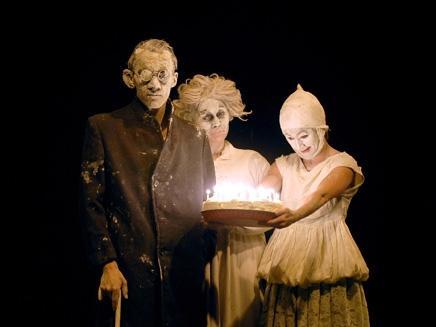
Une porte noir apparaît en fond de scène, les interprètes se bousculent, forment deux clans adversaires, se protègent les uns les autres puis forment un chœur. Ils sortent, seuls trois danseuses restent sur scène, assises. Les costumes ont changé, un gâteau et des bougies annoncent une fête, qui restera pourtant silencieuse. Sur leur lèvres en effet, se profile les paroles « Joyeux anniversaire » mais aucun son ne sort réellement de leur bouche.
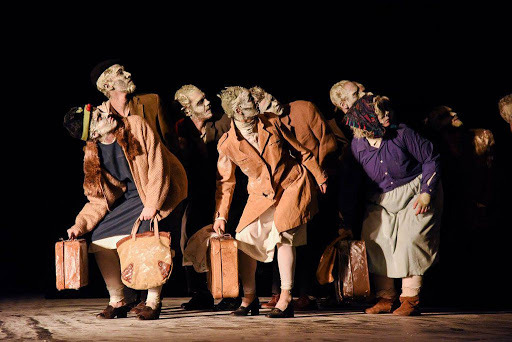
Des images beckettiennes se profilent enfin sur scène, apparaît alors, Clov et sa valise, Hamm, l’aveugle paraplégique dans une chaise, Pozzo et Lucky ce-dernier promené en laisse au bout d’une corde. Finalement, le morceau Jesus Blood never failed me yet du compositeur Gavin Bryars est diffusé en boucle jusqu’à la fin de la représentation. Tous passent la porte noire, puis reviennent, portant sacs et valises, recommencent, suivant le même chemin, en groupe ou seul. Les interprètes traversent et descendent du plateau en traînant des pieds, comme nous traversons notre existence. Dans une entraide soudaine, chacun porte l’autre. Un homme au nez pointu reste immobile, sous la lumière, le dernier voyageur reste là. Seul et las.
Danseuse et chorégraphe née à Toulouse en 1951, Maguy Marin étudie la danse classique au Conservatoire de Toulouse puis entre au ballet de Strasbourg pour enfin rejoindre Bruxelles et le parcours pluridisciplinaire que propose Maurice Béjart à l’École Mudra. En 1978, elle crée le Ballet-Théâtre de l’Arche avec Daniel Ambash qui deviendra la Compagnie Maguy Marin en 1984. Le Centre chorégraphique national de Créteil et du Val-de-Marne vit le jour en 1985 : elle y passera 16 ans avant de s’implanter au Centre Chorégraphique National à Rilleux-la-Pape en 1998. Sa pièce MayB (1981) la révèle au monde même si les premières critiques se veulent scandalisées, tout comme pour Umwelt (2004), elle déclare d’ailleurs dans une interview : « des gens sortaient, ils considéraient que ce n’était pas de la danse. Que c’était obscène.[1] ». En 2015, un nouveau projet ambitieux se construit : ramdam, un centre d’art.
[1] Maguy Marin dans Anna Sigalevitch, « Maguy Marin : Qu’est-ce qu’on fait des autres corps qui ne sont pas dans les canons de beauté ? », France Culture, Juillet 2019.
0 notes
Photo

Juliette Binoche in Flight of the Red Balloon (Hou Hsiao-Hsien, 2007)
Cast: Juliette Binoche, Hippolyte Girardot, Simon Iteanu, Fang Song, Louise Margolin, Anna Sigalevitch, Charles-Edouard Renault. Screenplay: Hou Hsiao-Hsien, François Margolin. Cinematography: Ping Bin Lee. Production design: Paul Fayard. Film editing: Jean-Christophe Hym, Ching-Sung Liao.
The Red Balloon (Albert Lamorisse, 1956) is a short film that won the Oscar for best original screenplay, even though it's only a little over half an hour long and has only a few lines of spoken dialogue. In it, a boy (writer-director Lamorisse's young son, Pascal) on his way to school finds a large red balloon that has become caught in a lamppost. He soon discovers that he can't take the balloon with him on a bus or into his school, but the balloon is waiting for him after classes. He's also forbidden to bring the balloon into his home, but it floats up to his bedroom window and he lets it in. Over the next couple of days, the balloon tags along, sometimes getting the boy into trouble, until it's finally punctured by a rock fired from another boy's slingshot and slowly dies. Whereupon balloons from all over Paris flock to the boy, who gathers them and floats away over the rooftops. It's a small charmer, with ravishing views of 1950s Paris by cinematographer Edmond Séchan. The balloon becomes emblematic of childhood innocence in conflict with the daily grind of adulthood, which is why I think it still strikes a chord with audiences and, in the case of Taiwanese director Hou Hsiao-Hsien, inspired an hommage: The Voyage of the Red Balloon. Hou's film, which he co-wrote with François Margolin, is nearly four times the length of Lamorisse's and doesn't have such a neatly symbolic resolution. In it, a boy, Simon (Simon Iteanu), lives with his mother, Suzanne (Juliette Binoche), in a cramped Paris apartment. Suzanne is a puppeteer -- a profession that links her with childhood -- who hires a Chinese film student, Song (Fang Song), as a part-time nanny for Simon. Song is working on her own homage to The Red Balloon, and we see bits of it as she poses Simon with a balloon and films it floating around the city. But much of Hou's film deals with the domestic turmoil that surrounds Simon as Suzanne, a divorcee, tries to cope with juggling career and household problems. She leases part of the building to Marc (Hippolyte Girardot), who has been stiffing her on the rent and tends to pop into her apartment at odd times to use her kitchen and leave it a mess. She is trying to evict him so she'll have a place for her daughter, who lives with Suzanne's ex-husband in Brussels, to stay when she comes to Paris in the summer. Simon patiently endures his mother's frazzled nerves and finds a companion in Song, who quietly manages to bring a little order into the household. By film's end, nothing is really resolved in their lives, but a red balloon peeps into the apartment windows and floats above the skylight over Simon's bed, as if childhood has persisted for the time being against all the assaults against it. It's a poetic, meditative kind of film that gains its strength from immersing us into the lives of others. It seems to me to stretch out a little longer than it should, but it features another terrific performance by Binoche.
0 notes
Photo

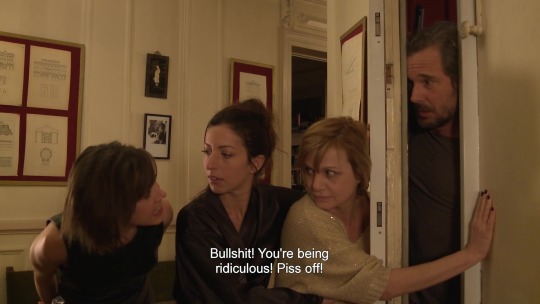
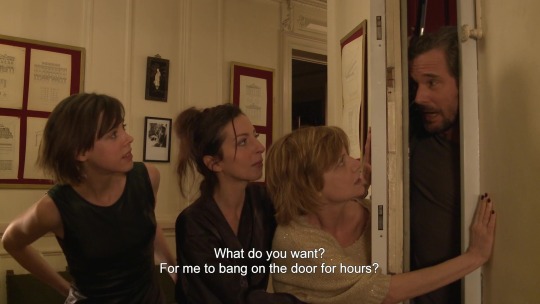


Que le diable nous emporte [Tempting Devils] (Jean-Claude Brisseau - 2018)
#Que le diable nous emporte#Tempting Devils#French cinema#Jean-Claude Brisseau#Fabienne Babe#Anna Sigalevitch#Jean-Christophe Bouvet#Isabelle Prim#Fabrice Deville#love#European cinema#French movies#Teuflische Versuchung#愉楽への手ほどき#European society#Baştan Çıkaran Şeytanlar#Que o Diabo Nos Carregue#women#humor#humour
2 notes
·
View notes
Text
Sonates pour Flûte et Clavecin, par Pierre et Marc Hantaï
Sonates pour Flûte et Clavecin, par Pierre et Marc Hantaï
Le disque recommandé par Anna Sigalevitch est celui-ci : “Sonates pour Flûte et Clavecin de Bach par Pierre et Marc Hantaï, chez Mirare. Lire la suite De: Sonates pour Flûte et Clavecin, par Pierre et Marc Hantaï
View On WordPress
0 notes
Text
A noo artikle ha dunben wrote uhn www.giterdonegossip.com
thar's a noo artikle ha dunben wrote uhn www.giterdonegossip.com calt
The Case of the Stolen Paintings
Frunçois Margolin’s new film, L’Antikwaire (which mite be callt ‘T' Art Deel'r’ if'n an' wen it is releeset n' t'English-speakin worl), is ficshun.But it is also a meditashun un one o't' greet French skun'als o't' las 65 yeers: t'dispossession o'Jewish art ...
0 notes